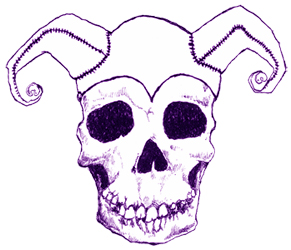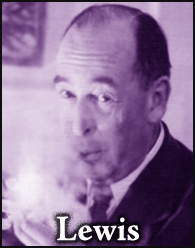The Cimmerian V5n2 — April 2008

Edited by Leo Grin | Illustrated by Socar Myles
40 pages
This issue was printed in two editions. The deluxe edition, numbered 1–75, uses a black linen cover with foil-stamped amethyst text. The limited edition, numbered 76–225, uses an amethyst cover with solid black text.
DELUXE COPIES DESTROYED: 16
LIMITED COPIES DESTROYED: 77
Features a series of translated pieces from a hot new French volume of Howardian criticism, an interesting new take on the subtext of Howard’s “Red Nails,” a piece on the influence of Howard’s historicals on the creation of Conan and his Hyborian Age, a poem by Clark Ashton Smith disciple Donald Sidney-Fryer, The Lion’s Den, and more.
EXCERPTS:
Can anyone even imagine a fantasy specialist such as Lord Dunsany writing a hard-boiled masterpiece such as Howard’s “Rogues in the House”? Admittedly, long before Howard launched the genre of Sword-and-Sorcery with “The Shadow Kingdom” in Weird Tales for August 1929, Dunsany had touched on many of the same concerns in “The Fortress Unvanquishable Save for Sacnoth” and “The Sword of Welleran” from 1908 and again in “The Hoard of the Gibbelins” from 1911, but those are mere surface similarities. The depths Howard explored came from his participation in his time, as he brought the genre of fantasy up to date. Post-war. Twentieth century. Now. The best of the writers in that day, writing in the populace pages of the wood pulp magazines — Hammett, Howard, Chandler, Lovecraft — brought their respective literary
genres up to date, and also, because they were genuinely magnificent in their craft, made them truly timeless.
— from “The Feast Is Over” by Don Herron
It is also Bibliothèque Mondiale which provided Bergier with the opportunity to become the first French critic to mention Robert E. Howard’s works, after having been his first fan in France as demonstrated by his 1937 letter to Weird Tales.
— from “Jacques Bergier, or, The Man Who Also Discovered Robert E. Howard” by Joseph Altairac, translated from the French by Patrick Dusoulier
In “The Call of Cthulhu” and in its follow-up, “The Black Stone,” the orgiastic eruption is not an end in itself, but a process intended to bring back a primordial being. The pygmies in the Carpathians or the half-breeds of Louisiana play the role of repositories of a prehistoric knowledge whose meaning is beyond them, and which they strive to reenergize through bloody rites intended to draw out from their torpor the masters of the original super-civilizations. Howard depicts such an orientation in the most striking manner. . . .
— from “An Unhallowed Ritual of Cruelty, Sadism, and Blood” by Michel Meurger, translated from the French by Patrick Dusoulier
Within, Xuchotl is a place of labyrinthine halls and secret passageways, under which lies a vast expanse of dank and black catacombs — the feelings of alienness and confusion Howard evokes would seem very similar to that experienced by a twenty-first century man dropped into the heart of Boston, Chicago, or Washington, DC without a map. Xuchotl has no traditional blocks or skyscrapers or tenements, but it soon becomes plain that Howard’s inspiration is contemporary: “Each tier was named; indeed, the people of Xuchotl had a name for each chamber, hall and stair in the city, as people of more normal cities designate streets and quarters.” Essentially a giant palace under one great roof, this is Howard’s version of our modern “concrete jungles” which can so easily overwhelm outsiders to a metropolis.
— from “The Unnatural City” by Brian Murphy
It appears almost certain he turned once more to Harold Lamb, whose Tamerlane (The Earth Shaker) was published three years previous. Howard picked up his copy of the 1930 edition in Waco, and throughout his career he rated Lamb among his favorite sources.
Tamerlane (a corruption of Timur, The Lame) was one of the great conquerors of history, comparable to Genghis Khan or Alexander in the reach and breadth of his conquests. Connections to Howard’s Conan stories become immediately apparent: names like Turan — as the ancestral stock of the Mongols and Tatars — and Khitai, the Tatar name for Cathay, appear in this volume. Most intriguingly, when Lord Timur makes a foray with his army up into Siberia, between the Tobol and the Ural rivers, Lamb writes (emphasis added):
“It is called the Land of Shadows,” Ibn Batuta said of this place, “and the merchants that venture hither leave their goods and go away, returning to find furs and leather in place of what they left. No one sees the people who live in this place. Here the days are long in summer and the nights are long in winter.”
It was the abode of the Cimmerians, the country of the Hyperboreans, the dwellers of the north.
The sky there is grey, the fog rising from the damp woods so constant that the sun takes hours to become
visible in the morning after it has lit the dawn. It is possible that Lamb’s allusions to Cimmerians and Hyperboreans sparked an interest in these obscure semi-mythical peoples on Howard’s part. Only a few months after reading this, in February of 1932, Howard would visit the hill-country around Fredericksburg in a winter’s cold gray rain and write: I remember.
— from “Conan and the Crusaders” by Steve Trout




